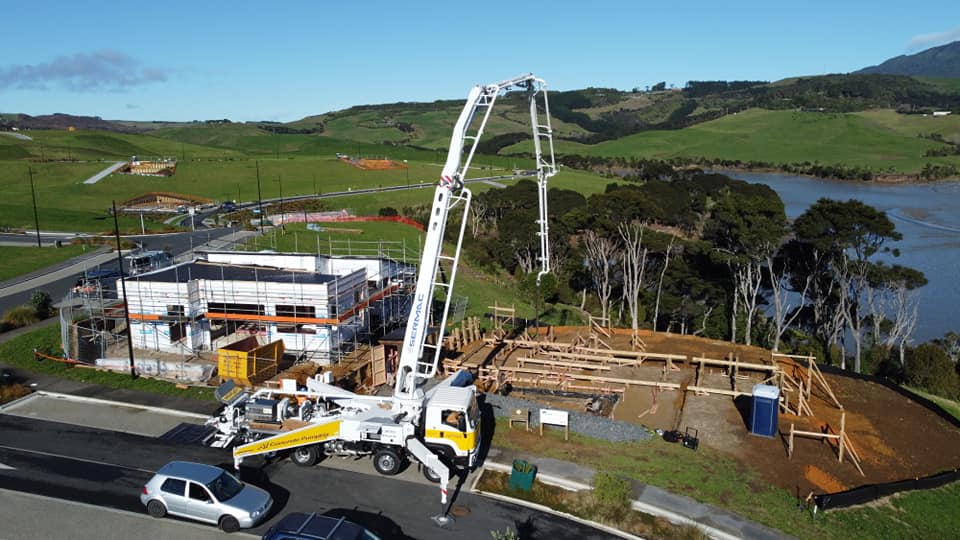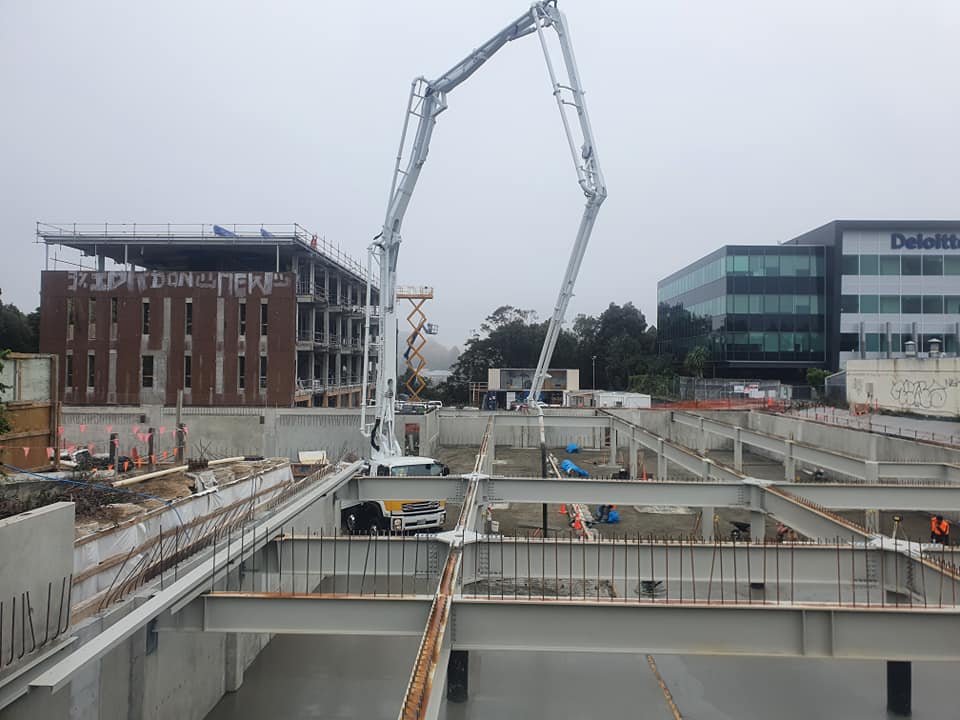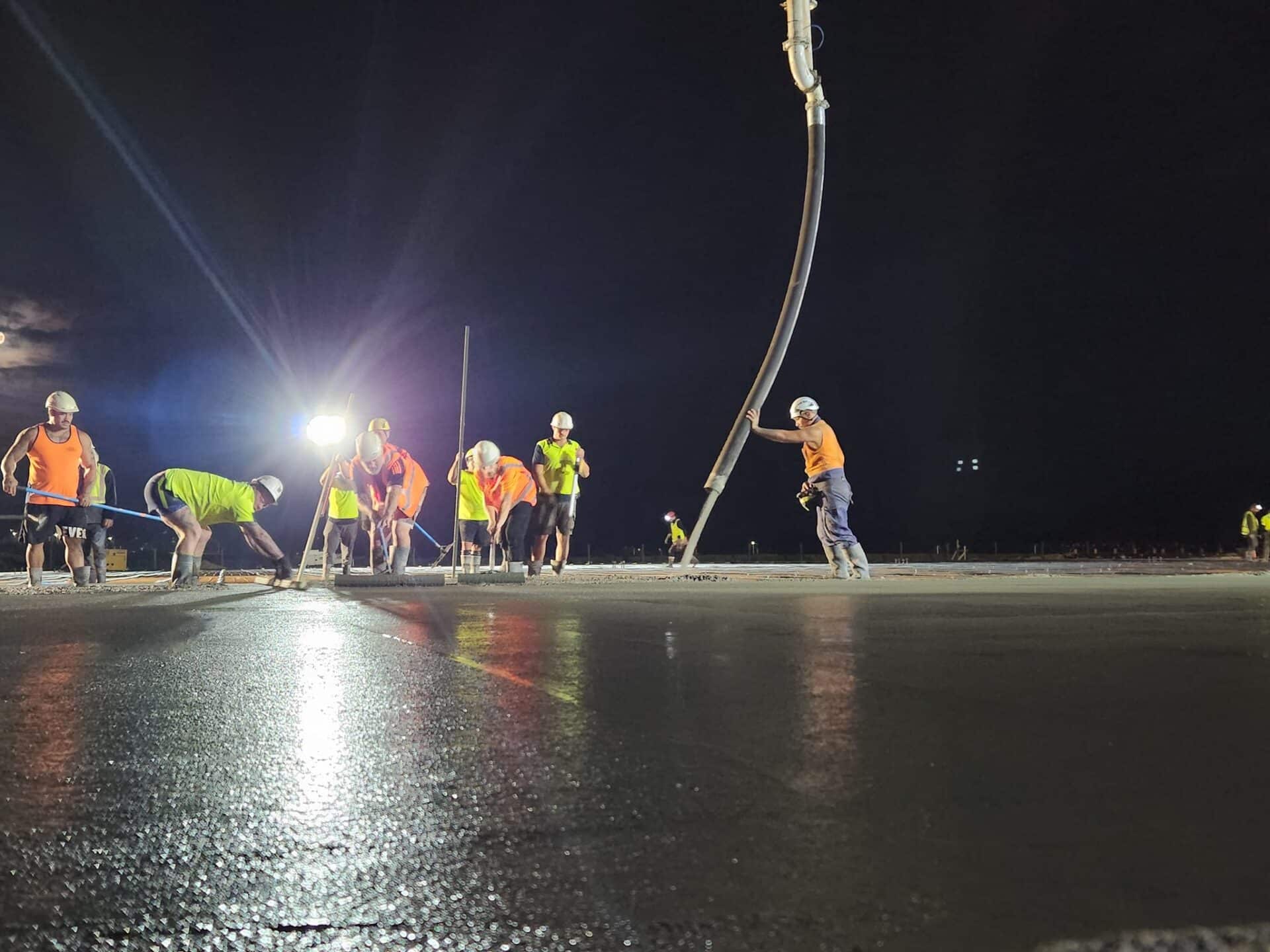Concrete pumping is a modern, efficient, and reliable way to place concrete exactly where it’s needed. Whether you’re working on a small residential project or a large commercial site, concrete pumping simplifies the process, saves time, and ensures a high-quality finish. If you’re new to concrete pumping, this guide will help you understand the basics, along with some useful tips and tricks tailored to various conditions.
What Is Concrete Pumping?
Concrete pumping involves using specialized equipment to move liquid concrete from the mixer to the desired location. This is done through flexible hoses or rigid pipes, powered by a pump. It is especially useful for projects where traditional methods of moving concrete, like wheelbarrows or buckets, are impractical or inefficient.
Types of Concrete Pumps
- Boom Pumps:
- Equipped with a hydraulic arm (or boom) that can extend to reach high or difficult-to-access areas.These pumps are ideal for multi-storey buildings, elevated slabs, or projects requiring concrete to be delivered over obstacles.Boom pumps are highly efficient for large-scale pours, such as high-rise construction or large commercial slabs.
- Line Pumps:
- Use flexible hoses or steel pipes to deliver concrete. These pumps are more portable and adaptable to different site conditions.
- Suitable for smaller projects or when working in tight spaces where a boom cannot be deployed.
- Line pumps can handle a wide range of concrete mixes, making them versatile for varied applications.

Why Choose Concrete Pumping?
- Efficiency:
- Pumps deliver concrete quickly and directly to the site, significantly reducing labor and time compared to manual methods.
- Large volumes can be placed in a fraction of the time, making it ideal for projects with tight deadlines.
- Precision:
- Concrete can be placed with pinpoint accuracy, minimizing waste and the need for extensive clean-up.
- This is particularly beneficial for intricate designs or hard-to-reach areas.
- Access:
- Overcome site challenges, such as steep gradients, obstacles, or limited space, that make traditional pouring methods difficult.
- Consistency:
- Pumps ensure a steady, even flow of concrete, resulting in a stronger, more uniform finish.

The Concrete Pumping Process
- Planning the Pour:
- Conduct a thorough assessment of the site, including access points, obstacles, and the location of the pour.Ensure the formwork is correctly installed and reinforced. Double-check dimensions and levels.Coordinate with the concrete supplier to ensure the mix is appropriate for pumping and the specific project requirements.
- Setting Up the Pump:
- Position the pump as close as possible to the pour site without obstructing other activities.Lay out the hoses or pipes in a straight line whenever possible to reduce pressure loss and avoid blockages.Secure all connections to prevent leaks or bursts during the pour.
- Pumping the Concrete:
- Start the pump at a slow, steady rate to ensure the concrete flows smoothly through the system.Operators control the flow rate to match the pace of the crew spreading and finishing the concrete.Regularly check the hose for blockages or air pockets, which can disrupt the flow.
- Finishing the Concrete:
- Once placed, use screeds, floats, and trowels to level and smooth the surface.
- For decorative finishes, such as stamped patterns or exposed aggregate, ensure the surface is prepared before the concrete begins to set.
- Curing:
- Protect the freshly poured concrete from extreme weather conditions, such as excessive heat or rain, during the curing process.
- Use curing blankets, plastic sheeting, or curing compounds to retain moisture and enhance strength development.
Common Projects for Concrete Pumping
- Driveways and Pathways: Ensure smooth, durable surfaces that can handle daily use and heavy loads.
- Foundations and Footings: Create strong, level bases for buildings and structures.
- Retaining Walls: Efficiently fill block cores and create solid support structures.
- Slabs and Floors: Perfect for residential homes, commercial buildings, and industrial facilities.

Tips and Tricks for an Expert Result
- Site Preparation:
- Clear the area of debris and ensure the formwork is properly secured and inspected.
- Plan the pump and hose layout in advance to avoid delays on the day of the pour.
- Choose the Right Concrete Mix:
- Work with your supplier to select a mix designed for pumping. It should have the right balance of fluidity and strength.
- Work with your supplier to select a mix designed for pumping. It should have the right balance of fluidity and strength.
- Monitor Weather Conditions:
- Avoid pouring in heavy rain, as water can weaken the mix. In hot weather, consider using additives to slow curing.
- Avoid pouring in heavy rain, as water can weaken the mix. In hot weather, consider using additives to slow curing.
- Communicate Effectively:
- Ensure everyone on-site understands the plan and maintains clear communication with the pump operator during the pour.
- Ensure everyone on-site understands the plan and maintains clear communication with the pump operator during the pour.
- Clean Equipment Thoroughly:
- After the job, clean the pump and hoses immediately to prevent concrete from hardening inside.
Safety Considerations
- Site Safety: Keep non-essential personnel away from the working area to reduce the risk of accidents.
- Inspect Equipment: Regularly check pumps and hoses for wear or damage before use.
- Use Protective Gear: Ensure all workers wear appropriate safety equipment, including helmets, gloves, and high-visibility clothing.
Pros and Cons of Concrete Pumping
Pros:
- Efficiency: Concrete pumping saves time, especially on large-scale projects, by delivering concrete faster and reducing manual labor.
- Accessibility: Easily reaches challenging areas such as multi-storey buildings, narrow alleys, or sites with obstacles.
- Precision: Delivers concrete exactly where it’s needed, reducing waste and cleanup costs.
- Versatility: Handles a wide range of projects, from small residential tasks to massive commercial pours.
Cons:
- Cost: Pumping can be more expensive than traditional methods for small-scale projects.
- Equipment Needs: Requires specialized machinery and trained operators, which might not be readily available in remote areas.
- Not Always Necessary: For very small or straightforward projects, manual methods may suffice and be more cost-effective.
Suitable Projects:
- Large slabs, multi-storey construction, or sites with difficult access.
- Projects requiring high-volume or high-precision concrete delivery, such as industrial flooring or bridge supports.
Less Suitable Projects:
- Small backyard paths or single-room foundations where manual pouring is more practical.
- Projects with minimal concrete volume requirements where the cost of pumping might outweigh the benefits.
Concrete pumping is a versatile and efficient method for placing concrete, offering advantages in speed, precision, and quality. With proper planning, the right equipment, and attention to detail, even beginners can achieve professional results on their projects.
